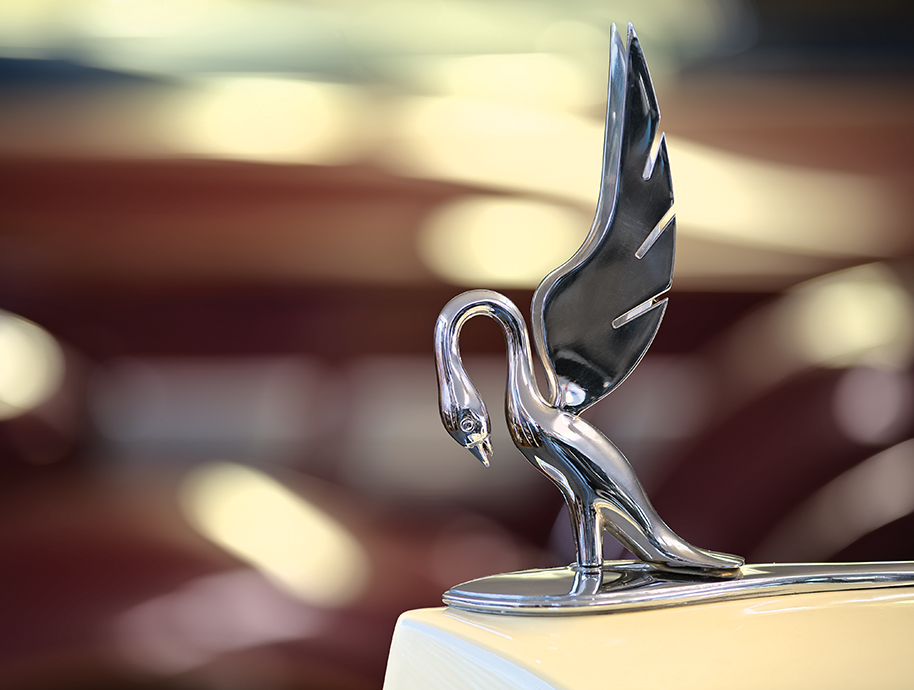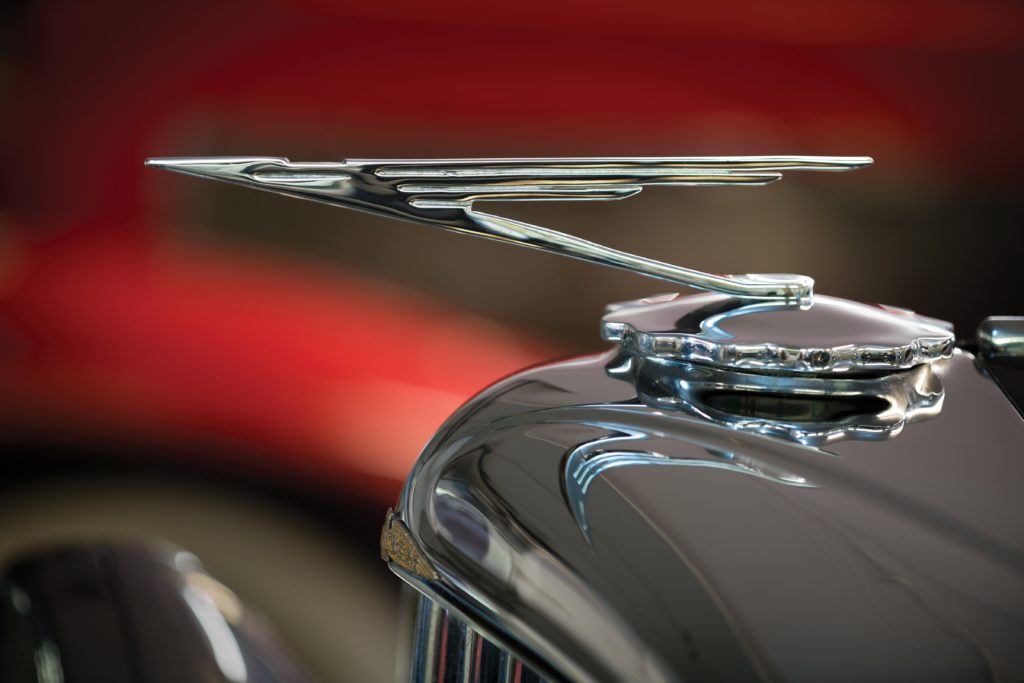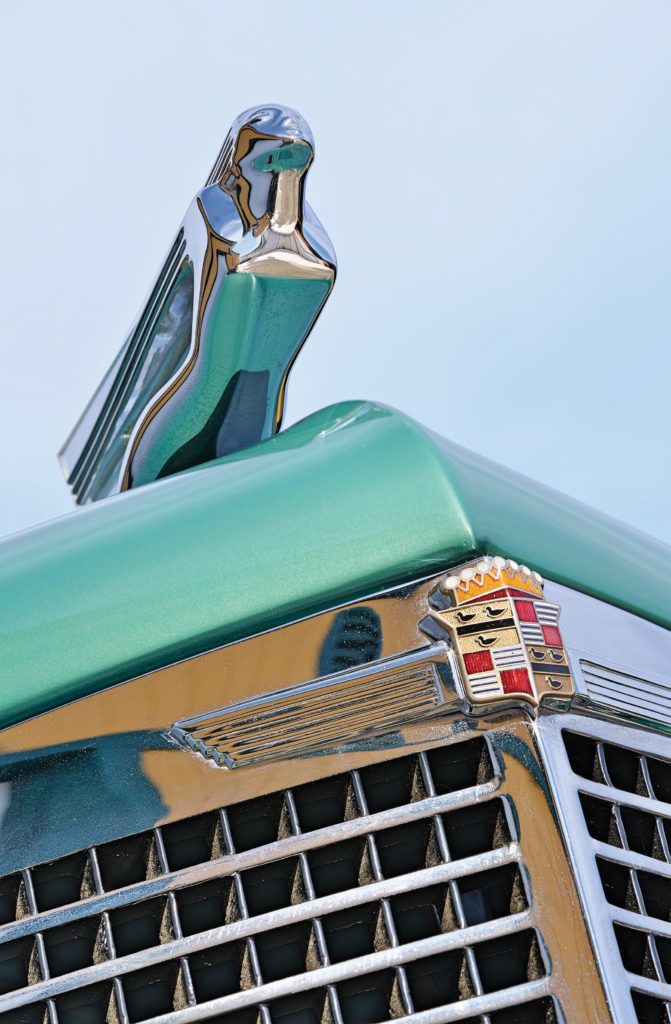By Don Logay
There was a time when American automakers dominated the design and production of vehicles that captured the hearts and minds of those ready to drive, explore and venture out to see the world.
From the earliest motorcars to the waning years of the golden age of automobiles, at the forefront – literally – was the crowning artistic touch that we admirers lovingly refer to as the classic “hood ornament” and what auto manufacturers and classic car collectors more correctly refer to as an automobile’s “mascot.”
The Art of Automotive Design
Classic car mascots of the 1920’s and ’30s – and all the way up to, and through, the iconic cars of 1950’s and ’60s – are incredible miniature works of art that, each in their own way, personalized the most famous automobiles in history.
From the elegant soaring figurines of the Rolls-Royce “Spirit of Ecstasy” series to the lavish Art Deco winged Goddesses featured on the 1934 Packard and 1938 Cadillac, for many aficionados, these historic classic car mascots are just as recognizable and identifiable themselves as the famous automobiles they represent.
Classic car mascots of the 1920’s and 30s – and all the way up to, and through, the iconic cars of 1950s and 60s – are incredible miniature works of art that, each in their own way, personalized the most famous automobiles in history.
From the elegant soaring figurines of the Rolls Royce “Spirit of Ecstasy” series to the lavish Art Deco winged Goddesses featured on the 1934 Packard and 1938 Cadillac, for many aficionados, these historic classic car mascots are just as recognizable and identifiable themselves as the famous automobiles they represent.
The legendary classic car mascots seen here are from the Phil Maloof Auto Collection, featuring over 160 fully restored pristine vintage automobiles on display in Las Vegas and captured in dazzling detail by award-winning photographer, Steve Patchin, who has been photographing the Maloof Car Collection for over 15-years.
In these pages, Patchin shares some of his favorite classic car mascots – both elegant and dramatic – that are nostalgic reminders of a yesteryear when automotive design was at the forefront, as were the beautiful automotive mascots of the day.
These incredible miniature works of art are both fascinating and curious. First, as to how they came about and then, equally so, why they went away.
Transition from Duty to Beauty
Automobiles of the early 1900s, actually evolved into the artistic mascots that followed decades later.
As engines were perfected, with greater horsepower and more complex design, manufacturers began adding items to assist drivers in managing a motorcar’s operation, including speedometers and ways to monitor oil pressure, fuel and the engine’s coolant temperature.
While most were mounted on the dashboard, there was however one important exception. A thermometer was mounted on top of the radiator cap at the front of the hood, where a driver could watch for possible coolant overheating without removing their eyes from the road as they roared along at dizzying speeds approaching 30, 40 or even 50 miles per hour.
While the rear-facing thermometers gave a constant coolant reading to the driver, auto manufacturers decided to also begin adding beautifully designed medallions on the front side, emblazoned with the company’s name and eye-catching logos.
Over time, radiator cap thermometers were replaced with more modern dash-mounted gauges and the era of magnificent classic car art truly began.
Classic Car Mascots
Soon, designers were coming up with ever more elaborate creations to sit atop radiator caps. And even when radiator caps began to be secreted out of sight and underneath car hoods, they seized the opportunity to go full force in expressing creativity and furthering a manufacturer’s image with amazing miniaturized works of art mounted on the hood.
So placed, these elegant mascots stood in constant view of drivers and passengers alike as they lead the way to countless adventures that lie down the winding road ahead.
Time Marches On
In the late 1970s the first wave of new safety regulations impacted the auto industry, noting that a number of sharp edges were to be eliminated from the front of cars to prevent injury to pedestrians.
As such, many mascots were re-imagined to include lower profiles with more sleek and soft-edged flowing designs.
But in the 1980s, still more regulations were introduced that all but eliminated hood mounted mascots of any shape and size and caused almost all auto manufacturers logos to now be mounted safely in the grille area.
Today, only a few automakers feature a hood-mounted statuette, such as Rolls-Royce, and these mascots have spring-loaded mechanisms designed to retract instantly into the hood if struck with force. The Mercedes-Benz emblem, and other such free standing mascots, are also designed with a spring mount to fold down on impact.
Gone but Not Forgotten
Today, the elegant mascots of days gone by continue to be honored and cherished by collectors and enthusiasts alike. And they are immensely appreciated and truly viewed as highly imaginative creative works of art.
Thanks to avid classic car collectors, such as Phil Maloof of Las Vegas, who has amassed an impressive number of fully restored vintage automobiles and art photographer Steve Patchin, who has documented the Maloof collection with lavish cocktail table photo books, glossy classic car calendars and various documentary videos.
Our thanks to those with an eye toward preserving and sharing such beauty – and to the work of Steve Patchin. Enjoy.
A life-long Las Vegas resident, Steve Patchin has been an award-winning photographer and digital artist for more than 30-years. Since also founding his Patchin Pictures studio in 1997 for film and video production, he and his team have been awarded ten Emmys® for Producing, Directing, Editing and Photography. Steve also turns many of his dramatic photos into amazing works of art using digital production techniques that blend realism with the artist’s imagination on canvas, metal and other media. To learn more visit patchinpictures.com.
YOU MAY ALSO LIKE
Iconic Duos: Famous Automotive Partnerships That Defined a Century of Luxury and Prestige








